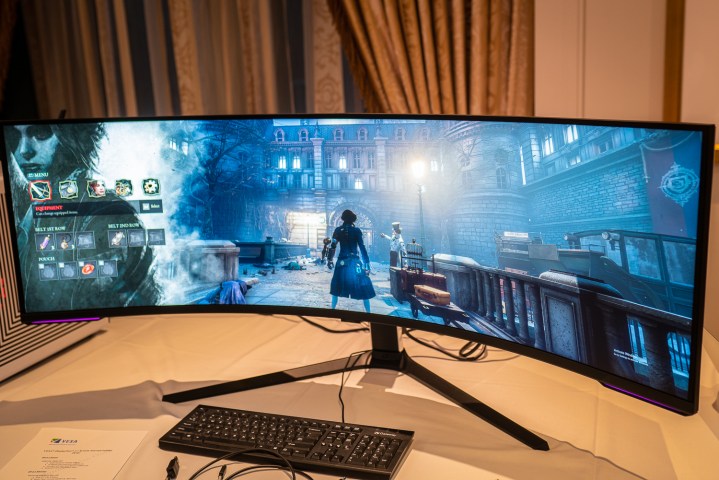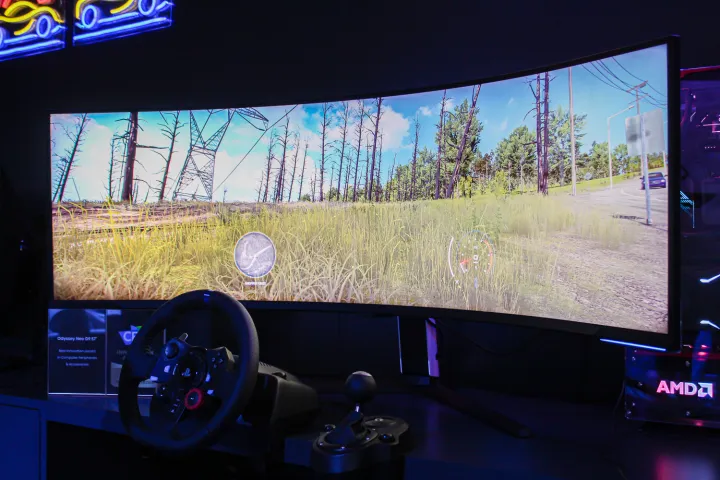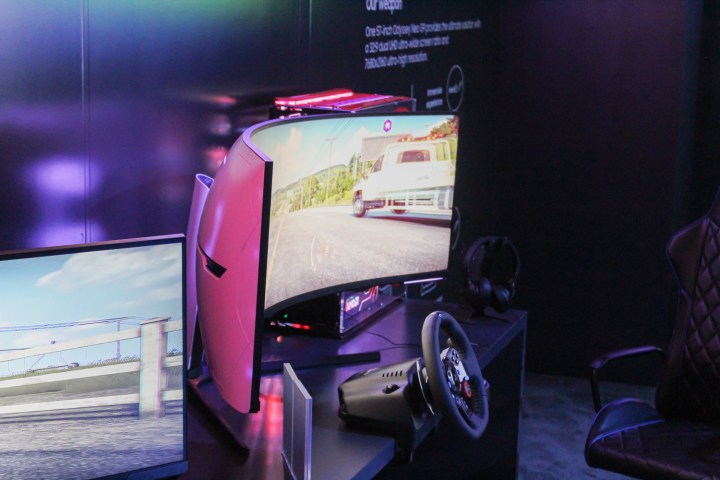Samsung recently opened up preorders for the 2023 model of the Odyssey Neo G9. It’s an impressive monitor by all accounts, and it floored us when we demoed the display earlier this year. But is it worth waiting for the monitor to officially drop?
With the new Neo G9 arriving, last year’s model has seen some steep discounts. At the time of writing, the display has seen a price cut of nearly 40%, bringing its $2,220 list price down to only $1,300. It’s a great option if you want a high-end display without completely breaking the bank, but there are a lot of differences between the 2023 Odyssey Neo G9 and last-year’s model you need to keep in mind before making a purchase.
Pricing

Let’s deal with the elephant in the room: pricing. As mentioned, you can find last year’s Odyssey Neo G9 for as low as $1,300 — and even less if you should opt for a preowned or open box model. There are plenty of them floating around given how long the monitor has been on the market.
The 2023 Odyssey Neo G9 is much more expensive. It’s $2,500, which is a $300 increase in list price compared to last year’s model. However, Samsung says anyone who preorders the monitor between now and October 1 will receive an instant $500 Samsung credit, bringing the prices a bit more in line with each other.
Even with that discount, last year’s version of the Odyssey Neo G9 is significantly cheaper. You’ll save anywhere from $700 to $1,200 depending on when you buy the display. It’s understandable that the new model is more expensive, as we’ll dig into below, but the price gap could make the difference for a lot of buyers.
Resolution and refresh rate

Although the 2023 Odyssey Neo G9 carries the same name as last year’s model, the two displays couldn’t be more different. For starters, the 2023 model is much larger at 57 inches. Both displays use the “super ultrawide” 32:9 aspect ratio, but last year’s model is only 49 inches diagonally.
In practice, last year’s model is the equivalent of putting two 27-inch displays side by side. The 2023 model equates to two 32-inch displays. Despite the increase in size, the 2023 Odyssey Neo G9 has the same 1,000R curve as last year’s version. The increase in size plays into weight, though. The 2023 model clocks in at nearly 42 pounds with the stand, while the previous version is 32 pounds.
Another big departure is resolution. The 2023 Odyssey Neo G9 has a “dual UHD” resolution, which basically puts two 4K displays next to each other. That shakes out to a resolution of 7,680 x 2,160. The previous version comes with a dual 1440p resolution, which comes out to 5,120 x 1,440.
The 2023 model is a significant step up in resolution, which makes sense given its size. Even with a resolution bump, both displays come with the same 240Hz refresh rate. The only difference is that the 2023 model uses DisplayPort 2.1 to support the resolution and refresh rate without compression. That connection is a significant spec for the new display. Currently, only AMD’s most recent GPUs like the RX 7900 XTX and RX 7900 XT support DisplayPort 2.1. Nvidia’s most recent GPUs will work with the monitor, but you’ll need to use lossless compression.
Brightness and panel tech
Neither of the Odyssey Neo G9 models sport an OLED panel — for that, you’ll need the Odyssey OLED G9, which is a 49-inch super ultrawide monitor. Both use VA panels instead, with Samsung’s Quantum Mini LED backlight. That enables a huge number of local dimming zones.
The 2023 Odyssey Neo G9 comes with 2,392 local dimming zones, while the previous version has 2,048. Given the higher resolution of the 2023 model, we expected to see a higher local dimming zone count. That could mean the previous version has more impressive HDR, but we haven’t had a chance to test the 2023 model yet.
A feather in the 2023 model’s cap is VESA DisplayHDR 1000 certification. The previous version has Samsung’s own Quantum HDR 2,000, which isn’t a real certification. It’s great to see the 2023 model with a third-party badge for HDR, even if both displays are capable of impressive HDR visuals.
We expect similar image quality out of both displays. They use the same backlight, and they both come with the same typical brightness of 420 nits (Samsung doesn’t list peak brightness for the 2023 model). The previous version could have slightly more impressive HDR with its high density of local dimming zones, though there shouldn’t be a major difference between the two displays overall.
Worth the wait (for some)

The 2023 Odyssey Neo G9 is a resolution bump more than anything, but it’s not insignificant. It’s the first dual 4K display we’ve seen, and it debuts DisplayPort 2.1 on gaming monitors. It’s a cutting-edge display for cutting-edge gamers. And it’s priced for that market, for those who are willing to pay any price for the latest and greatest.
For most people, last year’s version of the Odyssey Neo G9 is the more sensible choice. It’s still a high-end monitor at $1,300, but that’s still much cheaper than the monitor was going for a few months ago.
There are several other great monitors around that price, though. If you’re shopping for a display and aren’t sold on the 32:9 aspect ratio, make sure to read our other monitor roundups:
Editors’ Recommendations
